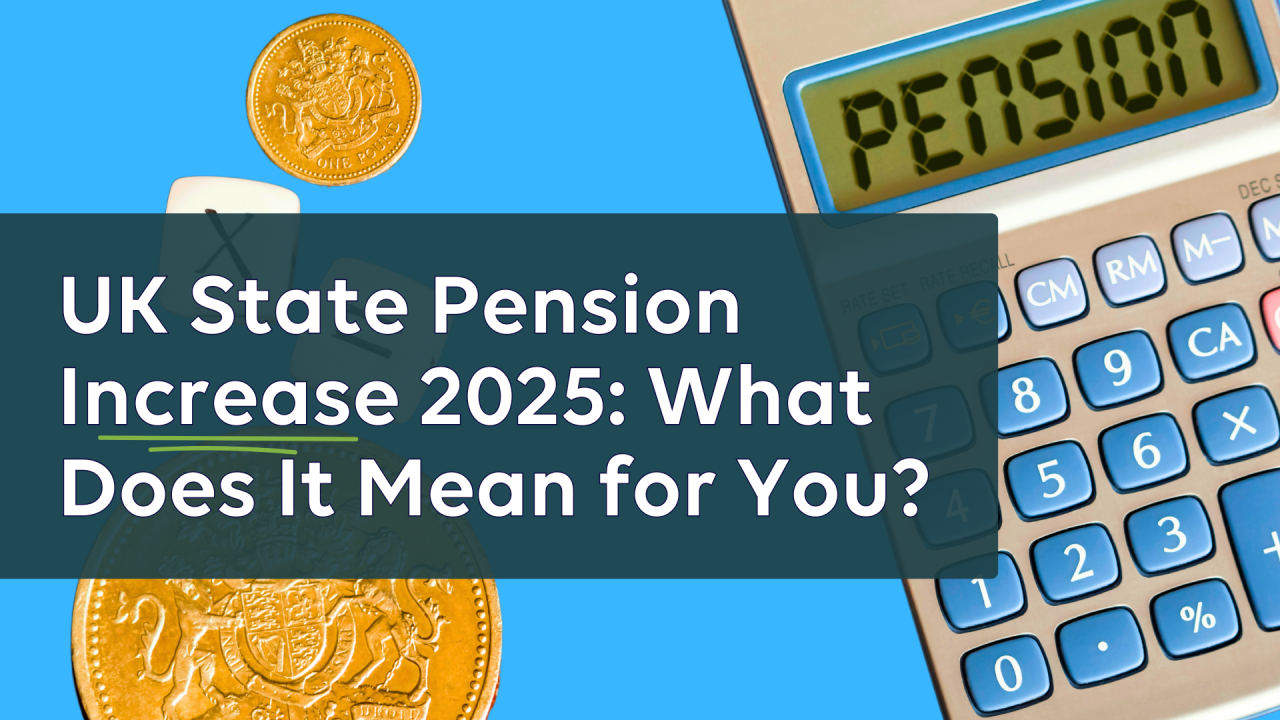The state pension in the United Kingdom is a regular payment from the government to individuals who have reached the state pension age and have made sufficient National Insurance contributions throughout their working lives. It provides a basic income in retirement and is an essential part of the welfare system.
The Department for Work and Pensions (DWP) is the government body responsible for managing the state pension. It oversees eligibility criteria, payment schedules, and any updates or reforms related to pension policy. The DWP ensures that pension payments are made accurately and on time to millions of recipients across the UK.
The annual increase in the state pension is important because it helps maintain the spending power of pensioners. As the cost of living rises due to inflation, an increase in pension payments ensures that retirees can continue to afford basic goods and services. Without these yearly adjustments, many older people could struggle to meet their financial needs.

What is the Triple Lock System?
The triple lock is a policy used by the UK government to determine how much the state pension increases each year. It was introduced in 2010 to ensure that the value of the pension keeps up with the cost of living and maintains its real-world purchasing power over time.
The purpose of the triple lock is to protect pensioners from financial hardship by making sure their income is not eroded by inflation or changes in the economy. It is designed to provide a fair and stable increase to pension payments every year.
The increase is based on whichever is highest of the following three factors: the rate of inflation as measured by the Consumer Prices Index (CPI), the average growth in earnings across the UK, or a fixed rate of 2.5 percent. By using the highest of these three, the system ensures that pensioners benefit from economic growth while being shielded from rising living costs.
How much will my state pension be in 2025?
Official increase announced: 4.1%
The UK government confirmed in the Autumn Budget and official uprating guidance that the state pension will be increased by 4.1% from April 6, 2025.
New weekly amounts
- For those claiming the new State Pension, the full weekly amount rises from £221.20 to £230.25.
- For individuals receiving the basic State Pension, it increases from £169.50 to £176.45 per week.
Taken together, this results in an extra £470 per year for those on the new State Pension and about £360 per year for those on the basic pension.
How the increase was calculated
The annual increase is determined by the triple lock system, using whichever is highest among: inflation (CPI), average earnings growth, or a guaranteed 2.5%.
- In September 2024, the CPI inflation rate was approximately 1.7%.
- From May to July 2024, average earnings grew by around 4.1%.
- Since earnings growth was the highest of the three, pension payments were uprated by 4.1%.
Here is a detailed comparison of the 2024 vs. 2025 State Pension payments, including weekly, monthly, and annual amounts for both the new and basic State Pension. This will help visualize the real impact of the 4.1% increase.
Detailed Comparison: 2024 vs. 2025 State Pension Rates
| Pension Type | 2024 Weekly Rate | 2025 Weekly Rate | Monthly Equivalent (2025) | Annual Total (2025) | Annual Increase |
| New State Pension | £221.20 | £230.25 | £921.00 | £11,969.00 | £470.00 |
| Basic State Pension | £169.50 | £176.45 | £705.80 | £9,180.00 | £360.00 |
Explanation of Each Row
- New State Pension: For people reaching State Pension age on or after 6 April 2016. To receive the full amount, 35 qualifying years of National Insurance contributions are typically required.
- Basic State Pension: For people who reached State Pension age before 6 April 2016. The full amount is based on 30 qualifying years.
- Monthly Equivalent: Based on 4.33 weeks per month (average number of weeks in a month).
- Annual Total: Calculated using 52 weeks of pension payments.
Key Takeaways
- The increase of 4.1% ensures the pension keeps up with rising wages, not just prices.
- For many pensioners, this provides extra support during a time when living costs are still high, even if inflation has begun to stabilize.
4. Why Did the Pension Increase in 2025?
1. September 2024 CPI inflation
In September 2024, the Consumer Prices Index (CPI) rose by about 1.7%, according to the Office for National Statistics. While this was an improvement from earlier levels, it remained a key input under the triple lock system.
2. Growth in National Average Earnings
Between May and July 2024, regular earnings in Great Britain rose significantly on a year-on-year basis—total earnings (including bonuses) increased by approximately 4.1%. Since this exceeded both inflation and the minimum guarantee, it became the determining factor in the pension increase.
3. Political Commitment to Protect Pensioner Income
The triple lock was introduced in 2010 and has since received broad support from major political parties and the public. Its core purpose is to ensure pensioners’ incomes keep pace with economic conditions. Recent statements from government officials reaffirmed the policy, particularly in the context of ongoing cost-of-living pressures.
• Inflation Forecast for 2025
- The Office for Budget Responsibility expects CPI inflation to average around 3.2% during 2025.
- The Bank of England projects inflation to reach approximately 3.5% in the third quarter of 2025 before gradually easing back toward its 2% target by early 2027.
Because earnings growth in 2024 significantly exceeded inflation and the guaranteed floor, the 4.1% pension uplift was triggered, ensuring that retirees benefited fully from economic gains.
What does the state pension changes mean for Pensioners
Estimated Additional Income
- New State Pension claimants (full-rate) will receive an extra £472 per year, equating to an increase of £9 per week compared to the previous year.
- Basic State Pension recipients gain around £363 annually, or approximately £7 more per week.
Changes in Real Income & Cost of Living
- The 4.1% increase, aligned with the highest earnings growth, aims to preserve pensioners’ purchasing power amid post-pandemic living costs.
- With inflation forecasted to remain elevated in 2025 (around 3.2–3.5%), this rise helps to shield pensioners from further erosion in real income. Yet, ongoing pressure from energy, food, and rent costs means many pensioners will still feel the pinch—even with the boost.
Winter Fuel Payment & Other Support Measures
- For winter 2025–26, the government reinstated the Winter Fuel Payment for around 9 million pensioner households in England and Wales.
- Households with taxable income up to £35,000 are eligible for a £200 payment (or £300 if someone is aged 80+), automatically administered via DWP and recovered through HMRC for higher-income recipients.
- Pensioners above this income threshold still receive the payment but must repay it via PAYE or self-assessment—no action is needed on their part.
- This reform is expected to cost £1.25 billion, while targeting support more efficiently and saving approximately £450 million by tapering off higher-income recipients.
Summary of Effects on Pensioners
| Benefit | Additional Value for Pensioners |
| Pension increase | +£472/year (new SP) or +£363/year (basic SP) |
| Real income | Helps offset 2025 inflation & living costs |
| Winter Fuel Payment | £200–£300 automatically in winter, with fair targeting |

Additional Support Measures for Pensioners in 2025
1. Pension Credit
- Pension Credit is an income-related benefit designed to top up the weekly income of pensioners with low income.
- In 2025, single pensioners with income below approximately £218.15 per week (or £332.95 for couples) may qualify.
- Pension Credit opens access to additional benefits, including help with rent, council tax, NHS costs, and Cold Weather Payments.
2. Warm Home Discount Scheme
- Eligible pensioners receiving the Guarantee Credit part of Pension Credit may receive a £150 discount on their electricity bill.
- Automatically applied between October and March by participating energy suppliers.
3. Cold Weather Payments
- Pensioners in specific postcodes experiencing temperatures at or below zero degrees Celsius for seven consecutive days between November and March receive £25 per week automatically.
Regional Cost-of-Living Considerations
- Pensioners in rural and northern regionsof the UK may face higher heating costs due to colder winters and fewer energy-efficient homes.
- Those living in London or the South East often experience elevated housing and council tax costs, which may reduce the overall impact of the pension increase.
- Devolved governments in Scotland, Wales, and Northern Ireland may offer additional localized support schemes for older adults, such as free prescriptions and bus travel.
Energy Costs Outlook for 2025
- Ofgem’s energy price cap for early 2025 remains volatile due to global energy trends, but wholesale prices have eased compared to 2023 peaks.
- Despite this, many pensioners remain on fixed incomes and are sensitive to even minor increases in heating bills during winter months.
- Government efforts to restore targeted support like the Winter Fuel Payment and Warm Home Discount aim to soften this impact.
6. How Will State Pension Be Paid?
The 2025 state pension increase will be applied automatically to all eligible recipients. If you already receive the state pension, you do not need to take any action to benefit from the updated rates.
The new amounts will be included in payments starting from 6 April 2025, in line with the government’s standard pension uprating schedule. Pensioners will continue to receive their payments on their existing 4-week payment cycle, based on their National Insurance number.
No new applications, forms, or re-registrations are required for the increased amount. The Department for Work and Pensions (DWP) will handle all adjustments and communicate updated payment details through annual statements or digital account updates, depending on how individuals receive their pension information.
In summary:
- The increase is automatic.
- Payments will be made on the same dates and in the same way as before.
- No action is needed from pensioners.
Future Outlook
Will the triple lock remain in place?
- The triple lock remains government policy and continued in 2025, demonstrating political commitment.
- All major parties pledged its retention in the latest parliamentary session, reinforcing its popularity with older voters.
Financial sustainability concerns
- The Office for Budget Responsibility (OBR) warns that the triple lock contributes to rising public expenditure on pensions—from 5.2% to nearly 8.6% of GDP by 2072/73—and increases long-term government debt.
- The “ratchet effect” of indexing pensions to earnings causes spending to rise faster, generating uncertainty around future public finances.
- By 2029–30, OBR forecasts suggest the policy could cost an extra £1.5 billion per year compared with earnings-indexing alone.
Predictions for 2026 and beyond
- Earnings remain key: OBR and industry commentators expect a 4.6% increase in April 2026, again driven by rising wage growth.
- However, freezing of income tax thresholds may push more pensioners into paying tax—a dynamic known as “fiscal drag”.
- As pension expenditure grows, future governments may face pressure to reconsider or tweak the triple lock. Options include moving to a “double lock” (inflation or earnings), capping the increase, or raising State Pension age.
- Comparisons with places like the Isle of Man—where the triple lock was replaced—highlight the UK’s looming choice between affordability and intergenerational fairness.
Summary
While the triple lock remains in place for now, concerns grow over its long-term affordability. With pension-related spending rising sharply in coming decades and forecasts predicting further earnings-driven increases, future reforms—such as replacing it with a different indexation method or adjusting the pension age—may become necessary.
8. Conclusion
The 2025 state pension increase, set at 4.1%, represents a meaningful rise in income for millions of pensioners across the UK. With the full new state pension rising to £230.25 per week and the basic state pension increasing to £176.45, this adjustment helps pensioners better manage everyday costs in the face of ongoing economic pressures.
Understanding and keeping up with annual updates from the Department for Work and Pensions is essential. Each year, changes to pension rates, eligibility rules, and support schemes like the Winter Fuel Payment can directly affect financial well-being in retirement.
Pensioners and future retirees are encouraged to regularly check their personal pension entitlements through their online State Pension forecast and review their National Insurance contribution record. Staying informed ensures that individuals receive the full amount they are entitled to and can make better financial plans for the years ahead.
FAQ’S
- How much will state Pension be in 2025?
From 6 April 2025, the State Pension will increase by 4.1%.
- Is BT pension increase 2025 26?
If you have any deductions, net additions or your circumstances change, this figure may vary from month to month. The pension increase for Section A & B of the Scheme for the 2025/26 financial year is 1.7%. To view and download your pension payslips online, register for our member portal at btps.co.uk.
- What is the retirement age in the UK in 2025?
As of 2025, the retirement age in the UK is currently 66 years old for both men and women. However, it will increase to 67 for those born on or after April 1960, starting in May 2026.
- What is state pension increase for 2025?
NHS pensions are subject to an annual increase which is based upon the consumer price index (CPI) as laid down by HM Treasury every year. The increase for 2025 will be 1.7%. The increase will be applied to your pension at the beginning of April in the new tax year.
- At what age will the pension age increase to by 2028 in the UK? 57
This is known as the normal minimum pension age (NMPA). There are some exceptions to this – like if you’re suffering from ill health or have a lower protected pension age, for example. But generally, the rule is the same for most people. From 6 April 2028, the NMPA is rising to 57.
- What is the pension indexing rate for 2025? 2.7%
The annual indexing rate for 2025 is 2.7%. In most cases, if you retired before 2024, the full indexing rate will be applied to your pension in January 2025-3 Feb 2025.
- How long will pension fund last?
There is a crucial distinction between how long a private pension can and should last. All being well, your pension pot should last for the duration of your retirement through to death.
- How much is a BT pension?
The government has confirmed the State Pension will rise by 4.1% from 6 April 2025. This means that for the 2025/26 tax year, the new maximum rate will be £230.25 per week, which equates to £11,973 per year.
- Is UK retirement age going to change?
The government has legislated for an increase from 66 to 67 in 2026-28 and to 68 in 2044-46. However, the timing of the rise to 68 will be looked at by an independent review.
- How many years NI to get full pension? 35 qualifying years
You usually need 35 qualifying years of National Insurance contributions to get the full amount. You’ll still get something if you have at least 10 qualifying years – these can be before or after April 2016.
- What is the pension increase review order 2025?
This Order specifies 1.7%. as the percentage by which that part of guaranteed minimum pensions attributable to earnings factors for the tax years 1988–89 to 1996–97 and payable by contracted-out, defined benefit occupational pension schemes is to be increased.
- How much is a good pension?
What is the 50 – 70 rule? The 50 – 70 rule is a quick estimate of how much you could spend during your retirement. It suggests that you should aim for an annual income that is between 50% and 70% of your working income.
- What is the minimum pension age forecast?
The normal minimum pension age (NMPA) is the earliest age most people can start withdrawing money from their Personal and Workplace Pensions. It’s currently 55 years but this will increase to 57 from 6 April 2028, unless you have a Protected Pension Age or you’re retiring because of ill health.
- What is the minimum pension in the UK?
The full new State Pension for 2023/24 is £203.85 a week, while the minimum (10 qualifying years) is £58.24 a week. Once you reach the minimum 10-year requirement, each additional qualifying year adds 1/35th of the full amount to your pension income.
- What is the maximum UK state pension?
Your State Pension amount depends on your National Insurance record. Check your State Pension forecast to find out how much you could get when you reach State Pension age. It also shows your National Insurance record. The full rate of new State Pension is £230.25 a week.
- How much savings can a pensioner have in the bank in the UK?
There isn’t a savings limit for Pension Credit. However, if you have over £10,000 in savings, this will affect how much you receive. If you’re a mixed-age couple (meaning only one of you is over State Pension age), you normally have to claim Universal Credit until you’ve both reached State Pension age.
